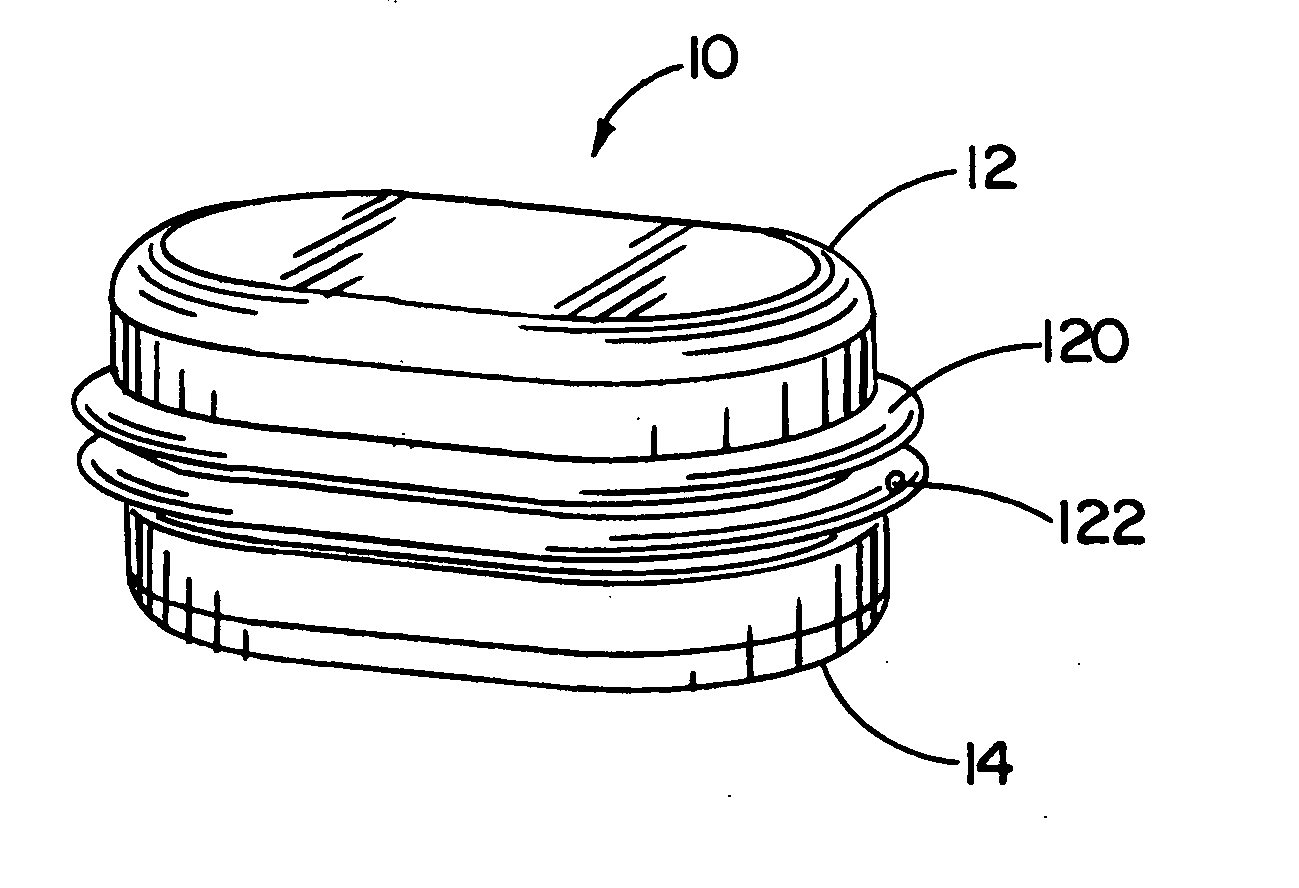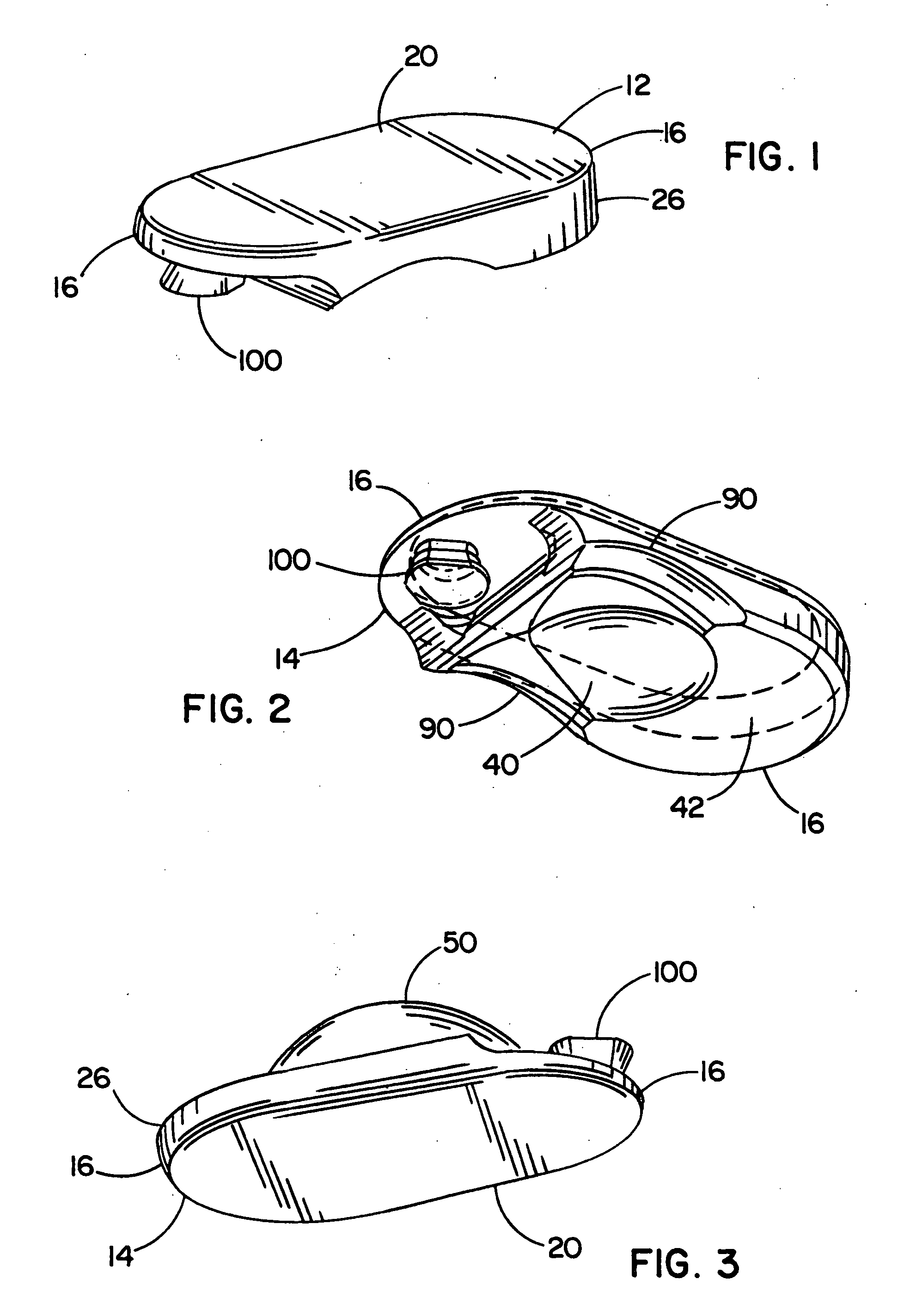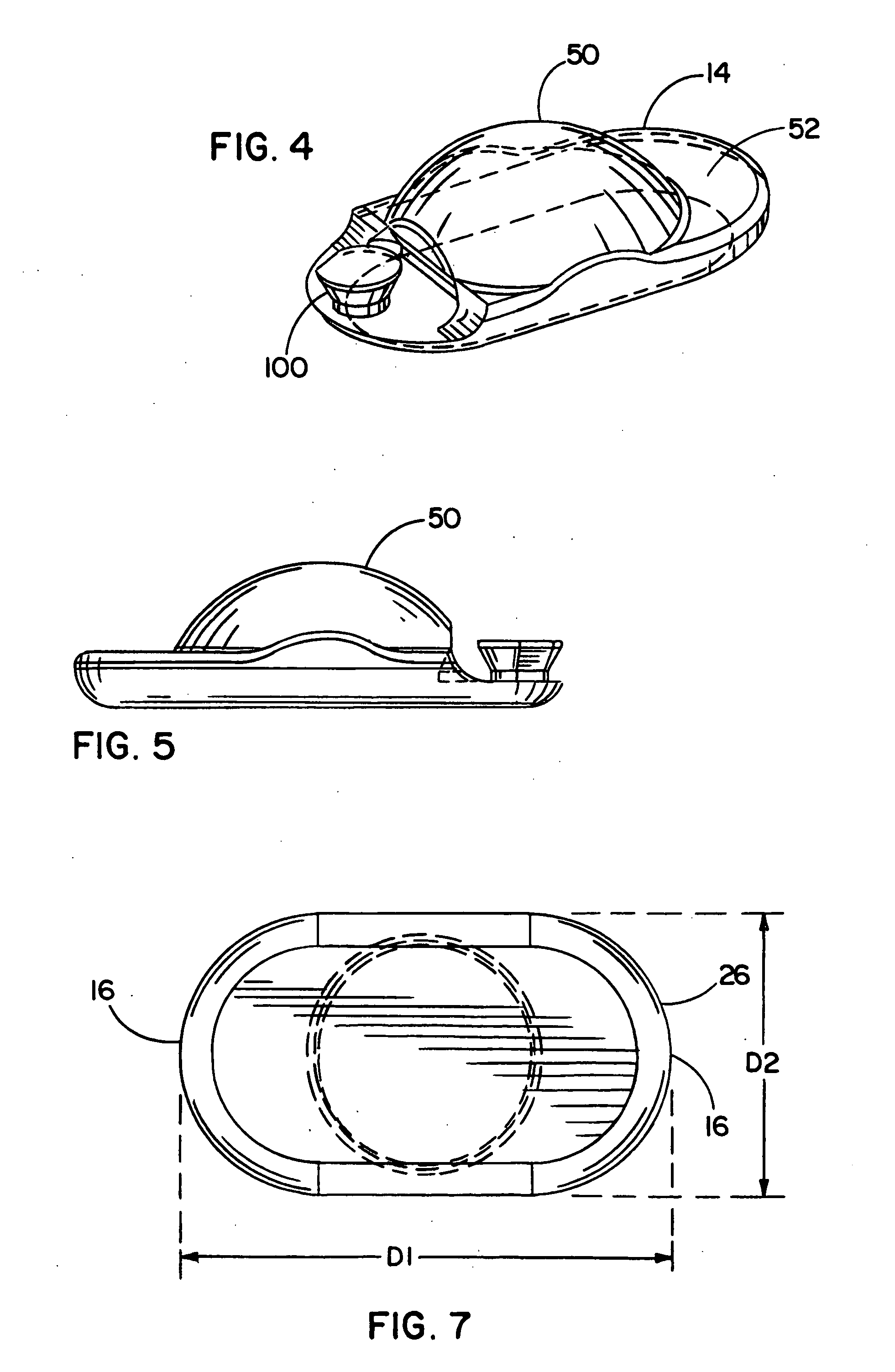Artificial disc device
a technology of artificial discs and discs, which is applied in the field of multi-piece implants, can solve the problems of sciatica or pain, urinary and fecal incontinence, and nerve system interference,
- Summary
- Abstract
- Description
- Claims
- Application Information
AI Technical Summary
Benefits of technology
Problems solved by technology
Method used
Image
Examples
Embodiment Construction
[0117] Referring now to the FIGURES, one embodiment of an implant device 10 is depicted including a top shell 12 and a bottom shell 14. As used herein, the terms top shell and bottom shell are simply referential for the arrangement of the shells as depicted, and the arrangement could be reversed. The implant 10 is a prosthetic nucleus implant for replacing the nucleus of a damaged natural spinal disc. The nucleus of the natural spinal disc is generally cleared by a procedure known as a nucleotomy where an incision is made in an annulus surrounding the nucleus, whereupon the nucleus is substantially removed. Typically, a small amount of the viscous nuclear material remains in the disc space, and this material can be used to provide an interface for reducing possible stress points due to incongruities between the implant 10 and end plates of the adjacent vertebrae.
[0118] One embodiment of the implant 10 is inserted through the incision in the annulus such that the annulus remains att...
PUM
| Property | Measurement | Unit |
|---|---|---|
| 15° angle | aaaaa | aaaaa |
| angle of deflection | aaaaa | aaaaa |
| angle | aaaaa | aaaaa |
Abstract
Description
Claims
Application Information
 Login to View More
Login to View More - R&D
- Intellectual Property
- Life Sciences
- Materials
- Tech Scout
- Unparalleled Data Quality
- Higher Quality Content
- 60% Fewer Hallucinations
Browse by: Latest US Patents, China's latest patents, Technical Efficacy Thesaurus, Application Domain, Technology Topic, Popular Technical Reports.
© 2025 PatSnap. All rights reserved.Legal|Privacy policy|Modern Slavery Act Transparency Statement|Sitemap|About US| Contact US: help@patsnap.com



